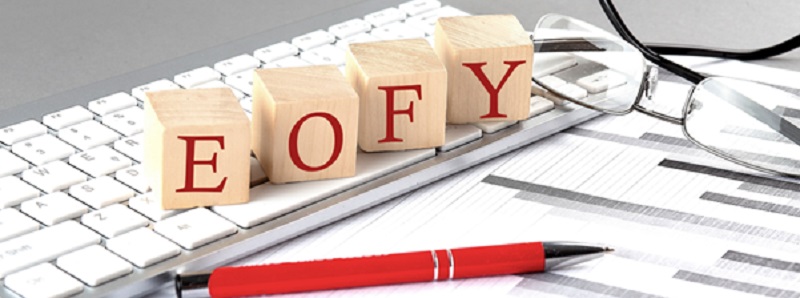EOFY In Australia: What Every Business Needs To Know

As the end of the financial year (EOFY) approaches, Australian business owners and brokers typically focus on wrapping up the books and preparing for tax season. EOFY in Australia is more than a compliance exercise, it’s a chance to evaluate business performance, claim eligible deductions, and plan for the new financial year.
Whether you’re a broker advising SME clients or an SME owner, understanding the key EOFY requirements may help you avoid costly mistakes and establish stronger financial strategies in the future.
This guide breaks down what businesses need to know about EOFY in Australia, from critical deadlines to essential financial documents, tax changes, and helpful preparation tips.

The Basics Of EOFY
In Australia, the End of the Financial Year (EOFY) refers to the period ending 30 June, which marks the close of the business and taxation year.
This date signals the time to wrap up financial records, finalise income and expense reports, lodge relevant documents with the ATO, and plan for the new fiscal period.
EOFY is more than just a compliance task. It’s also a potential opportunity for businesses to review their performance, claim deductions, assess cash flow, and make strategic adjustments before the new year begins.
It also lays the groundwork for accurate tax returns and helps avoid penalties or costly errors. The Australian Taxation Office expects businesses to meet several obligations throughout June and July.
These obligations typically include completing Single Touch Payroll (STP) finalisation, submitting Business Activity Statements (BAS), paying superannuation contributions, lodging income tax returns or appointing a tax agent to do so.
What Businesses Need To Know For EOFY 2025
EOFY is a busy time, but it doesn’t have to be overwhelming. Small business owners and brokers can tackle EOFY confidently and efficiently with a proper checklist.
From understanding new tax rules to collecting the right documents and evaluating business goals, the following sections briefly outline what’s most important for closing out FY24–25 on solid footing.
Check Important Dates
One of the easiest ways to stay compliant is to note key EOFY deadlines in advance. You can easily find a complete list of all key dates on the ATO website and see which ones apply to your business. However, the most vital date to mark on your calendar is 30 June, the official cut-off date for all financial reporting and deductions.
Brokers may want to encourage clients to consult early to avoid last-minute rushes and missed deduction opportunities.
Latest ATO Tax Changes
Each year, the ATO introduces updates that can impact SMEs.
For FY2024–25, some of the most relevant changes include:
- The $20,000 instant asset write-off remains in place for businesses with an annual turnover below $10 million. This allows eligible assets to be written off immediately if first used or installed by 30 June 2025.
- Updates to PAYG instalments, with some businesses now required to calculate instalments based on actual performance rather than fixed estimates.
- Small Business Energy Incentive may offer eligible small businesses bonus deductions for energy-efficient upgrades.
Remember Payroll And Single Touch Payroll (STP)
For EOFY, businesses must ensure payroll records are accurate and STP reports are finalised. Employers now must provide more granular information, such as employment conditions, pay periods, and income types.
This applies whether your clients use cloud-based accounting software or a manual system. Brokers who have payroll clients can help by ensuring the clients’ STP data is lodged correctly to prevent compliance issues and late lodgement penalties.
Create A Profit And Loss Statement
Think of your profit and loss (P&L) statement as a bird’s-eye view of your business’s financial health.
It summarises income, expenses, and net profit over the financial year and clearly describes what went right or wrong.
Creating a clean P&L can simplify tax time and help brokers and their clients identify trends, potential savings, and growth opportunities.
This document can benefit brokers reviewing client financials or assessing lending capacity.
Compile Documents For A Complete Tax Return
Before lodging your business return, collect and organise the following:
- Income statements
- Tax invoices and receipts
- Bank and credit card statements
- BAS and PAYG summaries
- Superannuation records
- Depreciation schedules
Accounting software can streamline this process, but manual systems work too, as long as you keep accurate records.
Brokers can add value by offering document checklists or recommending platforms to ease these EOFY tasks.
Maximise Tax Deductions
This is one of the biggest EOFY opportunities. Small businesses can usually claim expenses like:
- Office supplies and computer equipment
- Home office expenses (proportional)
- Marketing and advertising costs
- Vehicle and travel expenses
- Software subscriptions
- Repairs and maintenance
Industry-specific deductions also apply. For example, brokers may be able to claim licensing fees, professional memberships, and client management tools.
Small business owners may also want to consider consulting a registered tax agent for more comprehensive advice on eligible tax deductions.
Check Current Performance Against Set KPIs
Business owners can compare actual performance against their KPIs (key performance indicators) such as:
- Revenue growth
- Client acquisition
- Customer retention
- Marketing ROI
- Operational efficiency
This can be especially helpful for preparing annual reports or strategic business reviews. Understanding what worked (and what didn’t) sets a stronger foundation for next year’s decisions.
Consult A Professional Before Lodging Your Return
Taxes can be tricky, and errors can be costly. Whether you’re self-lodging or working with a bookkeeper, you may want to get a second opinion before hitting “submit.”
A registered tax agent can:
- Identify missing deductions
- Review financial reports
- Prevent compliance issues
- Offer advice on how to legally reduce your tax bill
The earlier you review your return, the more opportunities you have to adjust and avoid unnecessary liabilities.
Review Superannuation Obligations
To claim super contributions as a deduction this year, businesses must make payments before 30 June—not just accrue them.
SME can an use the ATO’s Small Business Super Clearing House for quick processing if they have 19 or fewer employees.
Back Up Financial And Client Records
EOFY is an ideal time to clean up your digital and physical records.
Securely back up accounting files, tax returns, and sensitive client documents. For brokers handling confidential data, regular backups are necessary for compliance and disaster recovery.
Plan For The New Financial Year
Once EOFY is behind you, it’s time to look ahead. Create a budget, set fresh goals, and review your cash flow forecast for FY2025–26. Consider:
- Whether you need business funding like a line of credit or a business loan
- If you’re planning to invest in equipment
- Adjustments to pricing or client offerings
Brokers can use this time to reconnect with clients and suggest funding solutions or business advisory services.
Conclusion
EOFY in Australia is more than a deadline. it can be a valuable checkpoint for businesses’ financial health.
Whether you’re a broker refining your books or supporting clients through the process, taking a proactive approach can unlock deductions, streamline tax time, and set the stage for a successful new year.
Stay ahead by lodging early, seeking expert advice, and keeping accurate records.







